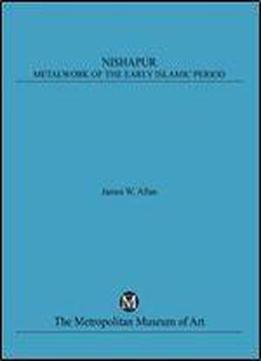
Nishapur: Metalwork Of The Early Islamic Period
by James W Allan /
2013 / English / PDF
15.2 MB Download
One of the most important and richest Islamic sites ever to be excavated is the medieval city of Nishapur, located in the eastern Iranian province of Khurasan. Founded during the Sasanian dynasty (and given the name New Shapur), it became the capital of the Tahirid dynasty in the ninth century, reaching its greatest prosperity under the Samanids in the tenth century, when it served as the seat of the governor and commander in chief of the province. Nishapur retained its importance under the Seljuqs, from its occupation by the first Sultan of this Turkic dynasty in 1037. In spite of its sack by the Ghuzz in 1153 and damage from a series of earthquakes in the twelfth and thirteenth centuries, it remained an active urban center until its destruction by the Mongols under Ghenghis Khan in izzi.
The site was chosen by the members of the Iranian Expedition of the Metropolitan MuseumWalter Hauser, Joseph Upton, and Charles K. Wilkinsonbecause, in addition to its political importance as attested to by medieval writers, Nishapur was a flourishing center for the production of arts and crafts as well as for trade. The Museums excavations were carried out from 1935 through 1939, with a final season in 1947. Reports of the excavations appeared in the Museums Bulletin in 1936 (September), 1937 (October), 1938 (November), and 1942 (April).
s











